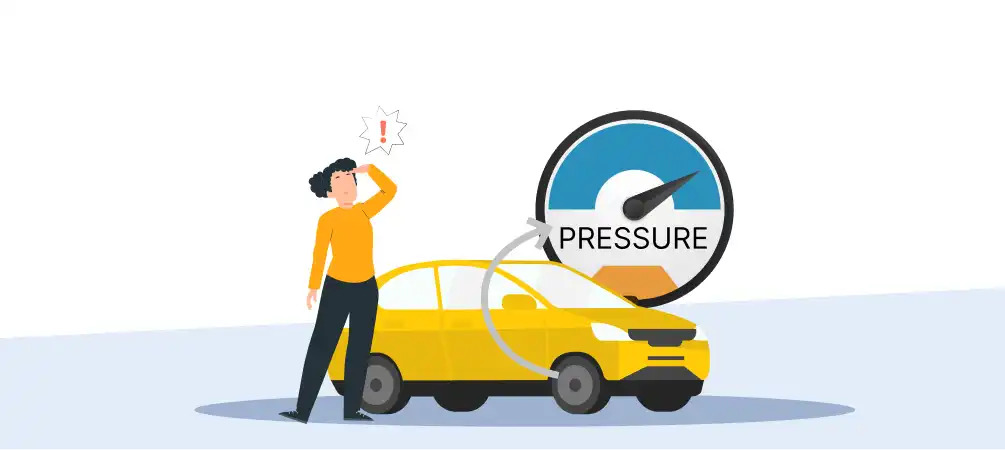Car Maintenance Guide for Indian Roads
Following a simple car maintenance schedule is essential to ensure your vehicle remains safe and reliable while driving on India's often unpredictable roads, many of which have potholes, speed bumps or get waterlogged during monsoon. Regular maintenance isn't just an additional task; it's a crucial part of keeping your car safe, saving fuel, and ensuring smooth operation over time. Neglecting regular servicing might cause unexpected breakdowns at the worst times.
This article discusses the essentials of a Car Maintenance Checklist, provides DIY tips, highlights common errors, and shows how adapting your maintenance routine to Indian road conditions can save time and money.

Table of Contents
Essential Maintenance Schedule
Daily/Weekly Checks
- Tyres and air pressure: Roads in India often fluctuate between smooth expressways and cratered lanes. Uneven tyre pressure can cause skidding, especially during the monsoon. Check pressure weekly (30–35 psi is common for most cars) and look for cuts or bulges. A good practice is to check your tires daily before heading out.
- Engine oil levels: Just as you check your phone's battery before a long trip, making sure the oil levels are proper is crucial for the engine to run smoothly. A common cause of breakdowns on the road is overheating, which can happen if the oil is low.
- Lights and indicators: In many areas with poor street lighting, a malfunctioning headlamp or brake light can make driving at night dangerous. Test lights and indicators at least once a week.
- Visual leaks: Check under the car for signs of oil or coolant leaks, especially after a long drive. Finding problems early might save you money on repairs.
Monthly Checks
- Brake inspection: In Indian traffic conditions, where sudden stops are frequent, brakes wear out faster than in developed countries with smoother traffic flow. Have a certified mechanic inspect your brake pads and discs monthly.
- Wiper blades and washer fluid: Monsoon-ready wipers are essential. Replace blades at least once a year, or even earlier if they leave streaks. Keep washer fluid topped up with water and mild detergent.
- Battery health: Car batteries can discharge quickly in high-heat summers or during extended parking. Inspect for corrosion, swelling, or difficulty in starting.
Quarterly Checks
- Wheel alignment and balancing: The wheels can easily become misaligned on unpaved village roads and potholes, resulting in unsteady steering and decreased mileage. Improper alignment also puts stress on suspension parts.
- Air filter cleaning: India’s dusty environment causes filters to clog faster. A dirty filter reduces engine performance and mileage. Please clean the filters quarterly and replace them
- Coolant levels: A cooling system failure on a hot day can be disastrous. Top up coolant and check for leaks. Always use manufacturer-approved coolant, not plain water.
Bi-Annual/Annual checks
- Full service:A comprehensive car service should include changing the oil and filter, replacing the brake fluid, inspecting the spark plugs, and checking the suspension. Follow the manufacturer's suggested schedule, which is usually every 10,000 kilometres or six months.
- Suspension and underbody inspection: India’s roads can put a car's suspension through a stress test. Worn-out shocks or springs can create a rougher ride and make the car more difficult to handle. It's essential to inspect your car's underbody for rust if you live near the coast or in an area prone to heavy rainfall.
- Emission test: According to the Ministry of Road Transport and Highways' rules, a valid PUC (Pollution Under Control) certificate is mandatory. Fines for not carrying one can go up to ₹10,000 under the Motor Vehicles (Amendment) Act, 2019.
DIY Maintenance Tips
- Maintain tyre pressure at optimum levels: Tyres that are over-inflated are more prone to bursting on potholes, whereas under-inflated tyres tend to use more fuel. A portable tyre inflator can be a smart investment for long trips.
- Wash and wax regularly: Monsoon mud and highway tar damage paint. Regularly cleaning and waxing your car every few months not only makes your car look great, but it also helps protect its finish. It’s also a smart way to help maintain its resale value over time.
- Listen to unusual sounds: Grinding brakes, squeaky suspension, or a knocking engine are your car’s way of asking for help. Ignoring them often doubles repair costs later.
- Carry an emergency kit: Besides the usual torch and jumper cables, include a tyre inflator, tow rope, and reflective triangle. These are often lifesavers during night breakdowns on highways.
- Check spare tyre and tools: Many car owners neglect this. A flat spare in the middle of nowhere is worse than no spare.
Common Mistakes to Avoid
- Skipping services: If you neglect your car's maintenance plan, minor issues might develop into serious malfunctions. For example, neglecting low brake fluid levels could harm the entire braking system.
- Using non-recommended spares: Counterfeit spares are common in India. They may be cheaper but compromise safety and void warranties. Always buy from authorised service centres.
- Neglecting suspension: Many drivers continue with worn-out shocks, which reduces braking efficiency and tyre life. A suspension failure on hilly terrain can be catastrophic.
- Not adapting maintenance seasonally: Monsoons demand extra care—tyres, wipers, and waterproofing of electronics. In summer, coolant and AC servicing take priority.
- Driving on low fuel: Many assume it’s harmless, but on Indian roads, fuel stations can be scarce in rural areas. Running on near-empty tanks also damages the fuel pump.
Conclusion
India’s roads demand more than just good driving skills—they demand vigilance in care. From potholes to monsoon floods, every kilometre tests your vehicle’s endurance. You can keep your car safe, roadworthy, and efficient for years to come by following a strict car maintenance schedule and implementing a practical car maintenance checklist.
But upkeep won't protect you from every problem. Your finances might still take a hit in the event of an unforeseen accident, breakdown, or damage caused by severe driving conditions. That's why it's essential to have adequate protection along with regular car servicing. Shriram Car Insurance provides comprehensive coverage and beneficial add-ons like Zero Depreciation Cover and Roadside Assistance Cover. This way, even if the road presents you with an unexpected challenge, your finances will stay protected. Explore our plans today!
FAQs
How often should I service my car in India?
Most manufacturers recommend maintenance every six months or 10,000 km, whichever comes first. If you often drive on rugged or rural roads, minimise the interval to 5,000-7,000 km.
What are the signs of poor suspension due to bad roads?
Look for excessive bouncing, uneven tyre wear, and a “pull” to one side while driving. Squeaking noises over bumps are also red flags.
Is monsoon maintenance different from regular servicing?
Yes, the rainy season needs extra checks on brakes, tyres, wipers, and waterproofing of electrical components. Anti-rust underbody coating is highly recommended.
Can I do basic car maintenance myself?
Absolutely. Tyre checks, fluid top-ups, cleaning, and battery inspection are DIY-friendly. However, leave complex repairs to authorised service centres.
What is the ideal tyre pressure for Indian roads?
It varies by vehicle, but generally 30–35 psi is ideal. Always check your car’s manual for specifics.



 35
35
















